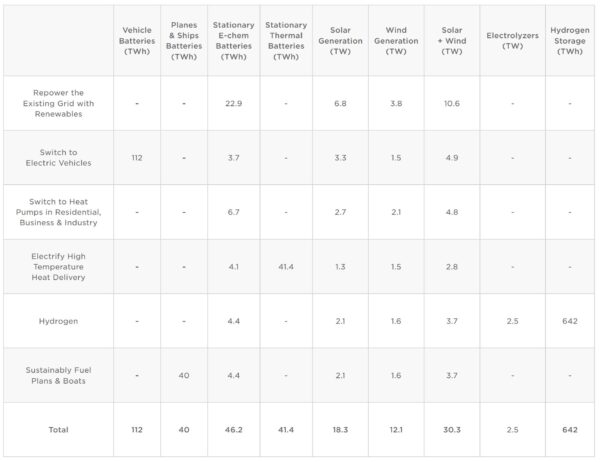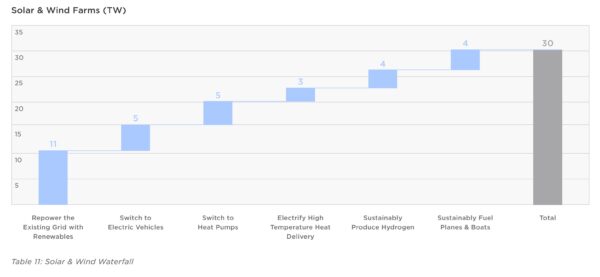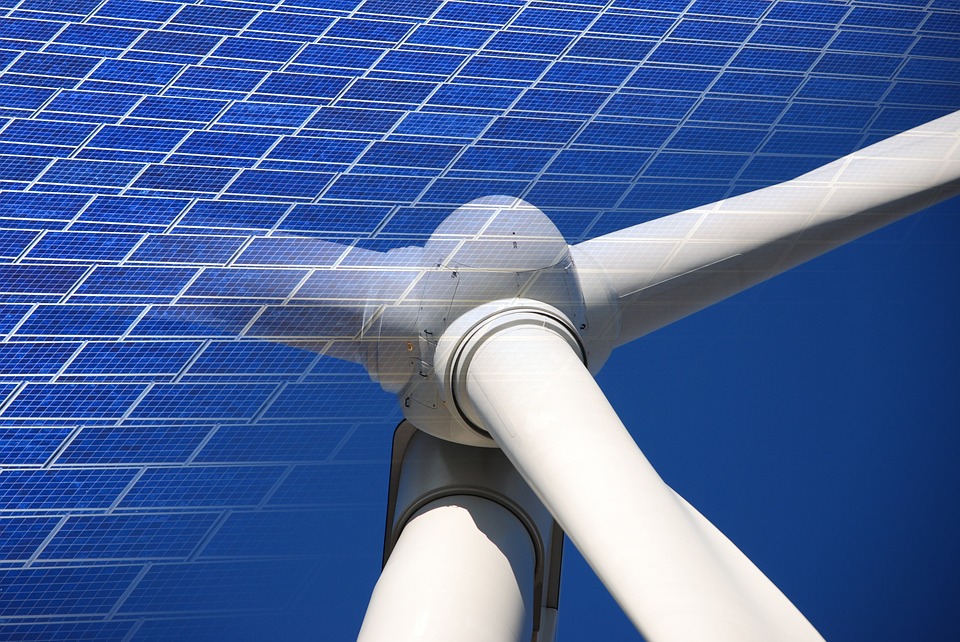Tesla has unveiled the third iteration of its Master Plan series, outlining the company’s vision for transitioning the United States and the world toward a sustainable future powered by clean electricity generation sources. The report covers a wide range of topics, including electricity generation, energy storage, transportation, investments, mineral use, heat pumps, electrification of industrial heating, recycling, and the electrification of boats and planes.

The document projects a need for 30 TW of predominantly wind and solar capacity, along with 240 TWh of energy storage. The Master Plan’s bibliography cites numerous data sources, including the National Renewable Energy Laboratory, Fraunhofer, the International Energy Association, and Princeton University’s Net Zero America plan.
The plan envisions a global deployment of 18.3 TW of solar power, 12.1 GW of wind power, and 2.5 TW of electrolyzers. The generation sources will supply 112 TWh of vehicle batteries, 40 TWh of plane and ship batteries, 46.2 TWh of stationary ‘e-chem’ batteries, 41.4 TWh of thermal batteries, and a substantial 642 TWh of hydrogen storage.

For the United States, the report proposes 3 TW of solar generation, which includes 15 million residential rooftops, industrial storage paired with 43 GW of commercial rooftop solar, 1.9 TW of onshore wind, and 64 GW of offshore wind. No new nuclear generation was considered.
In addition to generation resources, the Master Plan estimates a need for 6.5 TWh of 8-hour lithium-ion batteries, 6.9 TWh of industrial thermal storage, and 418 GW of electrolyzers providing 107 TWh of hydrogen storage facilities in the United States. The plan also considers an additional 1.2 TWh of distributed stationary batteries as replacements for over 200 GW of existing backup generator capacity.
Tesla categorizes the required 30 GW of capacity into six areas: repowering the existing grid, EV charging, heat pumps, high-temperature heat, hydrogen, and power for planes and boats. Repowering the grid demands the largest share, with 11 TW of capacity, while both EV and heat pumps require 5 TW each.

The report recommends utilizing the shoulder seasons of spring and fall, when electricity demand is low and solar and wind generation curtailment is more common, to produce and store hydrogen. This approach would align well with the higher consumption periods during summer and winter.
The Master Plan indicates that the total necessary manufacturing capacity for solar panels is 610 GW per year, with an estimated cost of $347.3 million per year per gigawatt of manufactured solar panels, following an initial $212 billion investment to build the factories. The document estimates the total twenty-year investment at $424 billion, resulting in a base cost of about $0.024 per watt.
The company estimated that solar recycling would cost $14 million per year after a $9 billion factory investment.
The document’s implementation relies on the interconnection of the United States’ major power grid regions.
This content is protected by copyright and may not be reused. If you want to cooperate with us and would like to reuse some of our content, please contact: editors@pv-magazine.com.









By submitting this form you agree to pv magazine using your data for the purposes of publishing your comment.
Your personal data will only be disclosed or otherwise transmitted to third parties for the purposes of spam filtering or if this is necessary for technical maintenance of the website. Any other transfer to third parties will not take place unless this is justified on the basis of applicable data protection regulations or if pv magazine is legally obliged to do so.
You may revoke this consent at any time with effect for the future, in which case your personal data will be deleted immediately. Otherwise, your data will be deleted if pv magazine has processed your request or the purpose of data storage is fulfilled.
Further information on data privacy can be found in our Data Protection Policy.